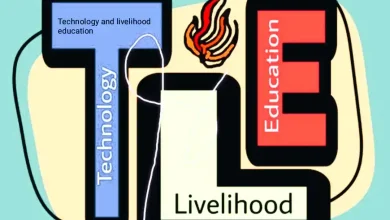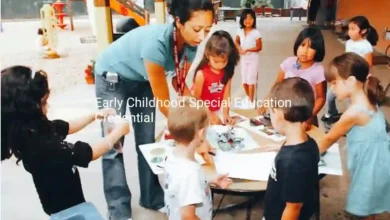Five Senses Education: A Holistic Approach to Learning
Table of Contents
Five senses education
The five senses education are touch, taste, smell, hearing, and sight. They are the main means of communication between us and the outside world. We gain knowledge about the characteristics of objects, the connections between objects, and other people’s emotions through our senses.
The five senses are used to increase learning and understanding in the five senses education method of teaching. Any topic area, from early childhood education through adult learning, can apply this methodology.
Benefits of Five Senses Education
The use of the five senses in teaching has several advantages. Among the advantages are:
- Increased engagement and motivation: Students are more likely to be engaged and motivated when they employ all of their senses to learn. This is due to the fact that kids are using more of their brains and are therefore more inclined to appreciate the learning process.
- Improved memory and recall: Students are more likely to remember and recollect what they have learnt when they learn through many senses. This is due to the fact that the information is stored in various brain regions.
- Greater comprehension: Students who use all of their senses to learn gain a greater comprehension of the subject. They can connect the dots between the many senses, which explains this.
- Education in the five senses can aid to increase creativity. This is so that they can learn about and experiment with various ideas and materials.
- Enhanced problem-solving abilities: Education in the five senses can aid in problem-solving abilities. This is due to the fact that students must utilize both critical and creative thinking to solve challenges.
How to Implement Five Senses Education?
Five senses education can be implemented in a variety of ways. Some suggestions are:
- utilizing visual tools like images, graphs, and diagrams.
- listening to or playing music.
- using fragrant elements, such as spices or essential oils.
- tasting various foods or beverages.
- putting your hands on things with smooth, rough, firm, or soft textures.
- taking field trips or interacting with various areas.
- Examples of Activities for the Five Senses
Five senses education exercises
Here are a few instances of five senses education exercises:
- Sight: Students can use magnifying glasses to study various items in science. Students can use a variety of colors and textures to make collages or paintings in art class. Students who study language arts might read literature about many cultures and write about the sights they encounter.
- Hearing: Students who study music may listen to several genres of music and recognize the instruments in them. Students can listen to stories and poems in language arts class and then describe the sounds they hear. Students can listen to recordings of other languages and civilizations during social studies.
- Smell: Students can distinguish different spices and herbs by their distinct scents when they are cooking. Students can smell several substances and recognize them in science. Students can smell various foods and recognize the nutrients they contain in health.
- Taste : Students who are learning to cook can taste various cuisines and describe their flavors. Students can taste several compounds and recognize them in science. Students can sample various foods and determine the nutrients they contain in health.
- Touch: Students can experience many textures and describe them when creating art. Students can touch many things in science and explain their characteristics. Students can feel many body components in physical education and recognize them.
- Field trip: Take the class on a field trip to a park, a museum, or another location where they may learn using all of their senses.
Tips for Implementing Five Senses Education
Here are some pointers for putting five senses instruction into practice:
- Have fun while being inventive! There are numerous ways to learn using all five senses.
- Be adaptable. Not every activity will be suitable for every student. Be ready to modify your plans if necessary.
- Find out what the students think. Find out from the students what they liked most about the activities and what they would change for the next time.
- Be tolerant. Students must practice using all of their senses to learn, which takes time.Continue to provide them practice opportunities while being patient.

Five senses education in the classroom
It is simple to integrate five senses education into the classroom. Here are a few concepts:
- Organize a sensory table. Students can learn about various smells, sounds, and textures by using a sensory table. Various items, such as sand, water, rice, beans, or shaving cream, can be placed on a table.
- Students should make a sensory book. Encourage your students to write or draw about their sense-based experiences. They can also remove images from newspapers or magazines.
- Travel for a field trip. Students can learn about their surroundings by using all of their senses during a field trip. Visit a park, a museum, or another location where the pupils can encounter many sights, sounds, scents, tastes, and textures.
- Play games and other exercises. The promotion of five senses education can be accomplished through a variety of games and activities. I Spy, Charades, and Simon Says are a few examples.
unlocking the potential of higher education
Five Senses education in the Home
It is possible to practice five senses education at home. Here are a few concepts:
- your kids in the kitchen. Children can engage their senses of sight, smell, taste, and touch during cooking. Allow them to assist you with the pot stir, vegetable washing, and ingredient measurement.
- Take a walk. Take your kids for a stroll through the park or your neighborhood. Allow them to take in all the many sights, sounds, smells, and textures they encounter.
- Read publications about various civilizations. Children can learn about the sights, sounds, scents, tastes, and textures of many cultures through books.
- Play sensory-based games. You can play a variety of sensory games with your kids. The Smelling Game and Blindfold Charades are a couple such examples.
Listings of five senses education books
A creative and successful technique to encourage learning is to compile a reading list for school that appeals to all five senses. A variety of books that appeal to the senses are listed below:
- Touch: Dorothy Kunhardt’s “Pat the Bunny” A timeless book for young children to touch and feel.
- Eric Carle’s “The Very Hungry Caterpillar” is renowned for its colorful and eye-catching pictures.
- – The interactive “I Spy” books by Jean Marzollo and Walter Wick promote visual observation.
- Hearing: ‘Brown Bear, Brown Bear, What Do You See?’ by Bill Martin Jr. and Eric Carle. A captivating tale with pleasing repetition and rhythm.
- “Scratch and Sniff Books” (many titles): These books frequently include fragrances in the narrative, transforming reading into a multisensory experience.
- Taste (indirectly): Judi Barrett’s “Cloudy with a Chance of Meatballs” Although it isn’t directly about taste, it encourages creative food-related thinking.
Keep in mind to modify your book selections dependent on the readers’ interests and age.
Here are a few more books to suggest that use the senses:
- Sensory Investigation: Ezra’s “The Snowy Day” Jack Keats: This book is excellent for touch and sight because it addresses a little boy’s sensory perceptions during a snowy day.
- Taste (Cooking and Baking): Laura Numeroff’s “If You Give a Mouse a Cookie” This endearing tale about a mouse who starts a series of events by receiving a cookie might inspire enjoyable baking and cooking activities with kids.
- “We’re All Wonders” by R.J. Palacio, under “Nature and Senses”: This picture book tells the narrative of Auggie, a little boy with facial defects, to foster empathy and respect for the senses.
- I’m not going to paint any more. by Karen Beaumont – Creativity and the Arts In this lively and enjoyable story, a young child decides to use their imagination and sight to paint their body.
- Paul Showers’ “The Listening Walk” – Sound Exploration An excellent book that inspires kids to go on a sensory walk while paying attention to the sounds they hear.
- “My Five Senses” by Aliki, an instructional book that introduces kids to the idea of the five senses through straightforward and interesting drawings, is a good example of sensory science.
Remember that the key is to select books that are appropriate for the learner’s age, developmental stage, and interests as well as their sensory requirements. All ages should find reading to be pleasurable and rewarding.
Conclusion
Students of all ages can gain from the five senses education method of teaching. Students are more likely to be engaged, motivated, and effective in their learning if they use all of their senses.
There are a ton of resources online and at libraries if you’re interested in learning more about five senses education. There are numerous five senses activities available that you may use at home or in the classroom.



